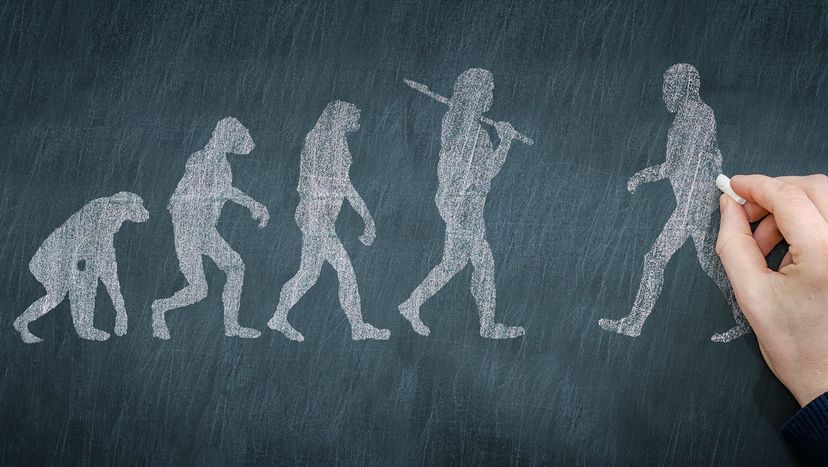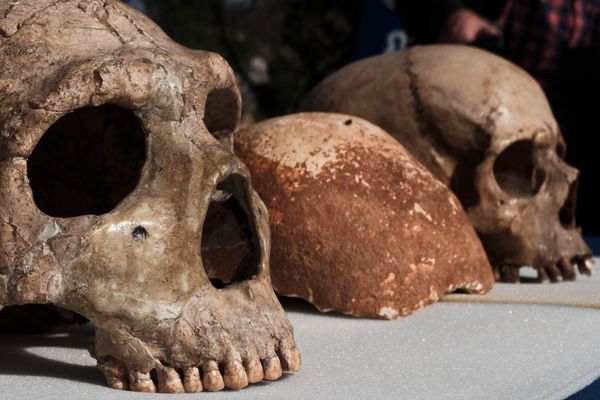Today, the Middle Awash region burns hot and inhospitable beneath a desert sun. But 10 million years ago, according to paleontologists and geologists, it held a cool, wet forest teeming with life.
Is it possible that an apelike creature such as N. nakayamai lived in these fertile woodlands? Is it furthermore possible that the creature was just beginning to experiment with a new lifestyle, one that brought it down to the ground from the trees?
Scientists think so, and they've been coming for years to the Middle Awash region, as well as points south, to learn when and how humanlike species diverged from the great apes.
Ardi and Lucy
One of the most important Middle Awash discoveries came in 1994, when a team of scientists led by Tim White of the University of California, Berkeley, found skeletal remains that included skull, pelvis and hand and foot bones. When the team pieced the skeleton together, it revealed a very early hominid that walked upright yet retained an opposable toe, a trait commonly found in tree-climbing primates.
They named the new species Ardipithecus ramidus, or Ardi for short, and determined that it lived 4.4 million years ago. In anthropological circles, Ardi has enjoyed almost as much fame as Lucy (Australopithecus afarensis), the 3.2-million-year-old hominid discovered in 1974 by Donald Johanson in Hadar, Ethiopia.
Lucy was the earliest known human ancestor for years, and for a while, it seemed that scientists might never peer any deeper into our dim past. Then Ardi came along and, more recently, other landmark discoveries.
In 1997, scientists found the bones of a new species, Ardipithecus kadabba, that lived in the Middle Awash region between 5 and 6 million years ago. And in 2000, Martin Pickford and Brigitte Senut from the College de France and a team from the Community Museums of Kenya unearthed one of the oldest hominids to date.
Its official name was Orrorin tugenensis, but the scientists referred to it as Millennium Man. This chimpanzee-sized hominid lived 6 million years ago in the Tugen Hills of Kenya, where it spent time both in the trees and on the ground. While on the ground, it most likely walked upright in terrestrial bipedalism.
Now scientists are working to close the gap between Millennium Man and the true "missing link" — the common ancestor that gave rise to humans down one line and great apes down another.
Unfortunately, despite the number of fossil apes discovered, the evolutionary relationships between these now-extinct apes and the earliest hominins remain poorly understood. There are a few reasons for this, including the fact that fossil apes are physiologically very different from living apes [source: Pugh].

